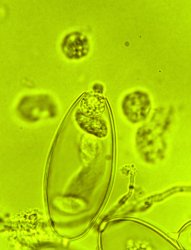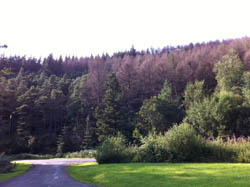Summary
 Phytophthora comes from the Greek for ‘plant destroyer’ and is one of the world’s most destructive genera of plant pathogens. Around 120 species of Phytophthora are now described, but some estimates suggest this may only be about a quarter of all Phytophthora species that exist worldwide but have yet to be discovered or named.
Phytophthora comes from the Greek for ‘plant destroyer’ and is one of the world’s most destructive genera of plant pathogens. Around 120 species of Phytophthora are now described, but some estimates suggest this may only be about a quarter of all Phytophthora species that exist worldwide but have yet to be discovered or named.
Probably the most famous species is Phytophthora infestans, which attacks the leaves and stems of potato plants and causes the disease that contributed to the potato famine in Ireland in the mid 1800s. Since the early 1990s the profile of Phytophthoras in forests and natural ecosystems has risen markedly around the globe and Phytophthora diseases such as Sudden Oak Death and Phytophthora Dieback (sometimes also known as Jarrah dieback) are considered as some of the most destructive.
When introduced into new environments, often accidentally through plant trade, many Phytophthora species have proved to be damaging to a wide array of plants and trees through lack of co-evolved defence responses. Research on Phytophthora diseases of trees has been a key part of the work of Forest Research for many years.
Current projects
- Global threats from Phytophthoras
- Pest Organisms Threatening Europe (POnTE)
- Epidemiology of Phytophthora ramorum and P. lateralis
- Understanding the threat posed by Phytophthora austrocedri to Juniper in Britain
- Molecular detection of Phytophthoras in the soil environment
- Mapping the distribution of Phytophthoras in Britain
Funders and partners
Current research is funded by the Forestry Commission as part of the programmes on Understanding Threats to Resilience and Delivering Resilient Forests. Other funders include Defra, Research Councils, EU programmes including Horizon 2020 and COST Actions, and the USDA Forest Service.
